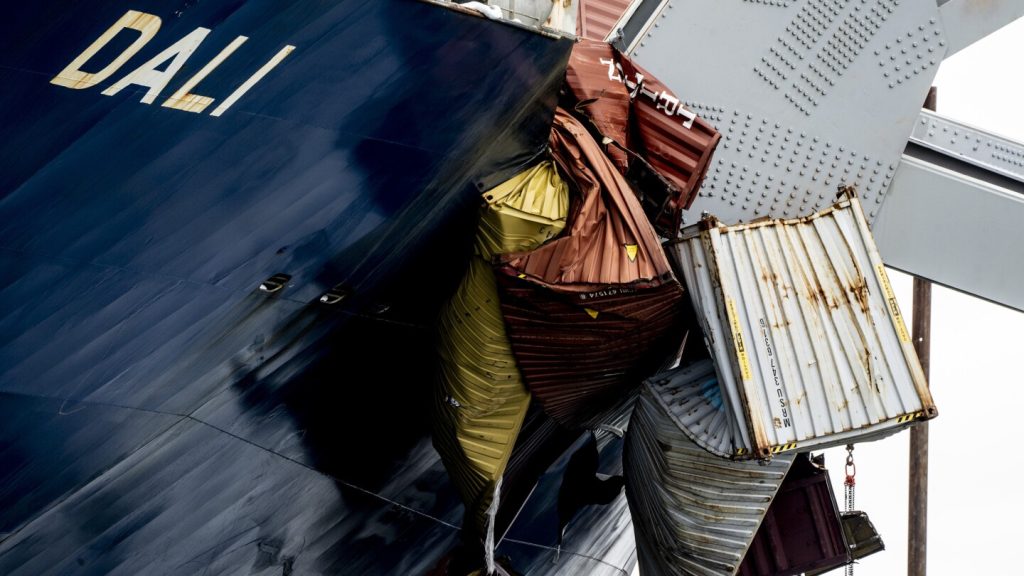A tugboat pushing a fuel barge was the first vessel to use an alternate channel to bypass the wreckage of Baltimore’s collapsed Francis Scott Key Bridge, which had blocked traffic along the vital port’s main shipping channel. The barge supplying jet fuel to the Department of Defense left late Monday and was destined for Delaware’s Dover Air Force Base. The temporary channel is primarily open to vessels assisting with the cleanup effort, including barges and tugs that have been stuck in the Port of Baltimore since the collapse. Officials are also working on a second channel on the southwest side of the main channel for deeper draft vessels.
Crews are currently removing steel and concrete at the site of the bridge’s deadly collapse after a container ship lost power and crashed into a supporting column. Dive teams have surveyed parts of the bridge and checked the ship, while workers in lifts are using torches to cut above-water parts of the twisted steel superstructure. Authorities believe six workers fell to their deaths in the collapse, with two bodies already recovered. The remaining four bodies are a top priority for recovery, followed by reopening shipping channels. The mangled steel girders of the fallen bridge present a difficult task for crews, described as “chaotic wreckage” by officials.
Gov. Wes Moore is scheduled to visit one of two Small Business Administration centers in the area to assist companies with loans for losses caused by the bridge collapse disruption. President Joe Biden is expected to visit the collapse site Friday to meet with state and local officials and discuss federal response efforts. The cargo ship Dali, which caused the collapse, remains stationary with 21 crew members on board. Authorities are working to determine responsibility and potential legal liabilities associated with the incident, with Synergy Marine Group and Grace Ocean Private Ltd. seeking to limit their liability through a court petition.
Officials are facing challenges in determining how to rebuild the major bridge, which was a symbol of Baltimore’s working-class roots and maritime culture. Congress is expected to consider aid packages to help those impacted by job losses or business closures due to the extended closure of the Port of Baltimore. The port, which handles a significant amount of cars and farm equipment, plays a crucial role in the U.S. supply chain. As the investigation and recovery efforts continue, the community and authorities are working together to address the aftermath of the collapse and ensure the safety of the port and its workers.


